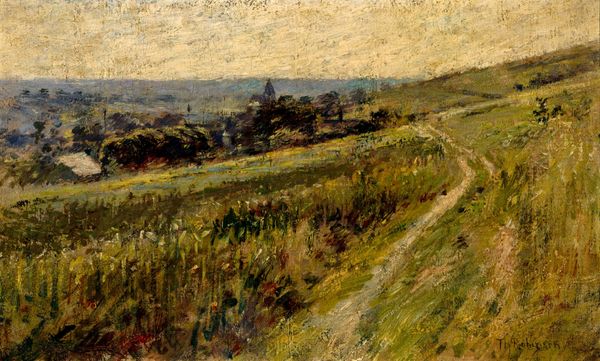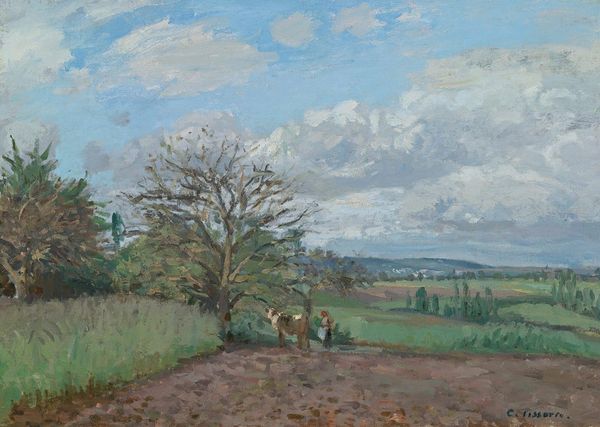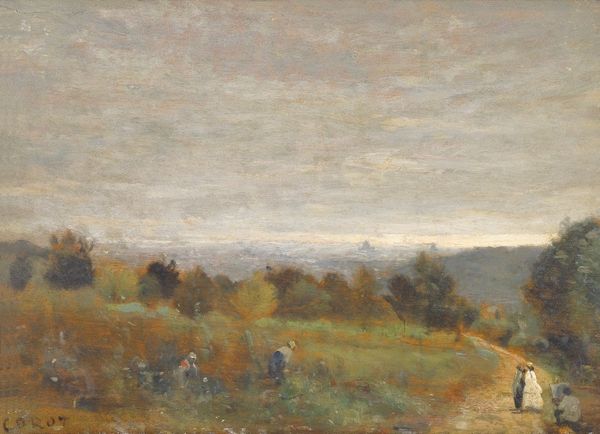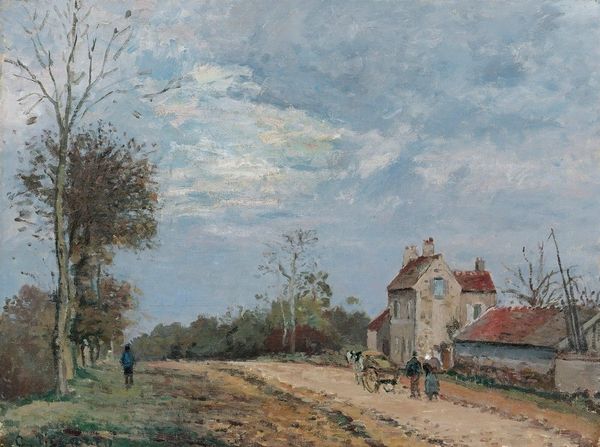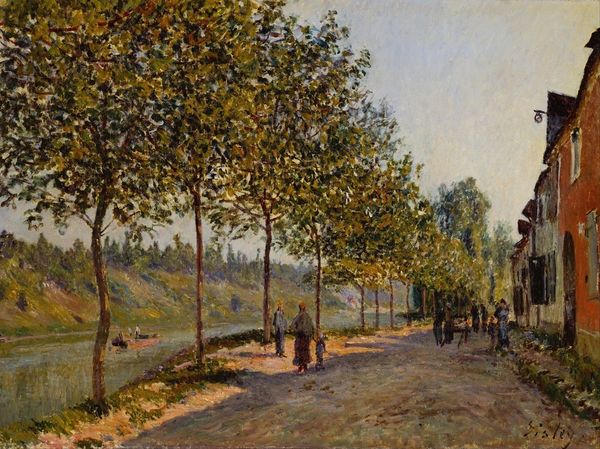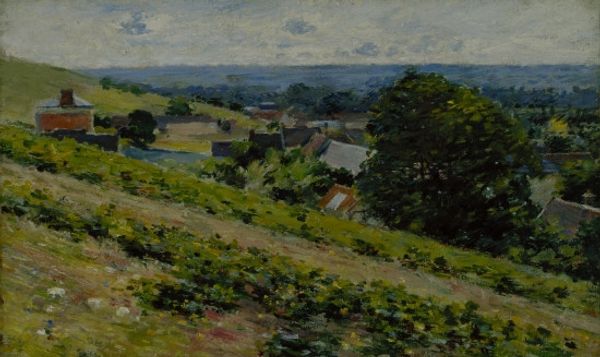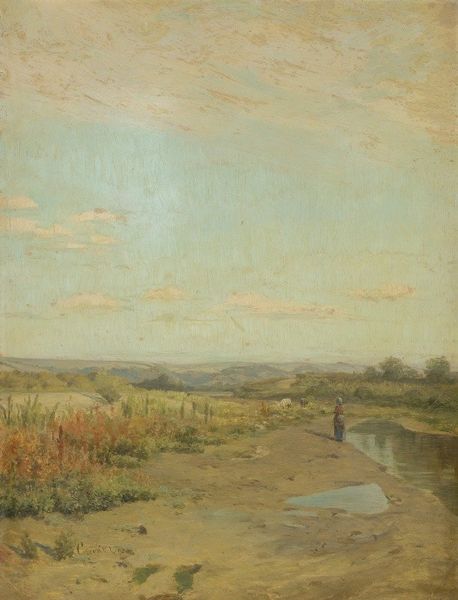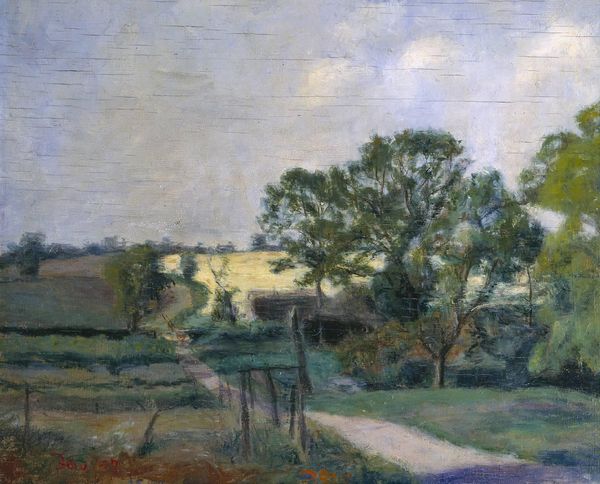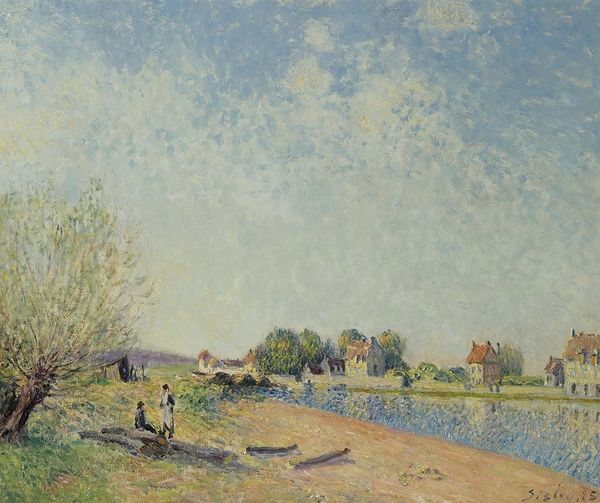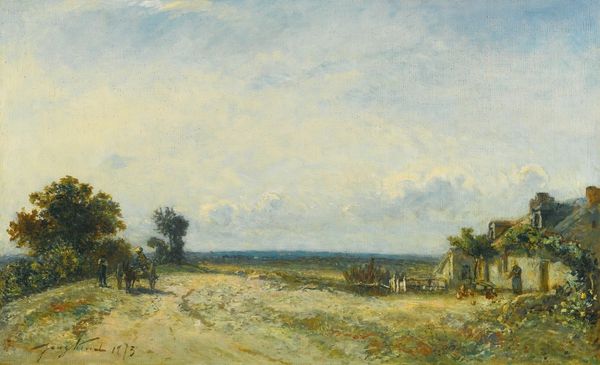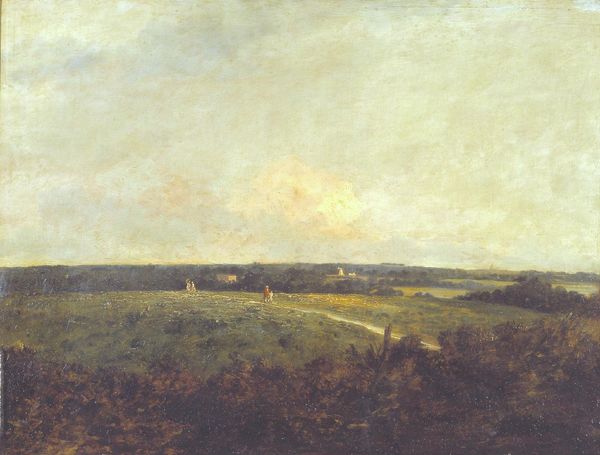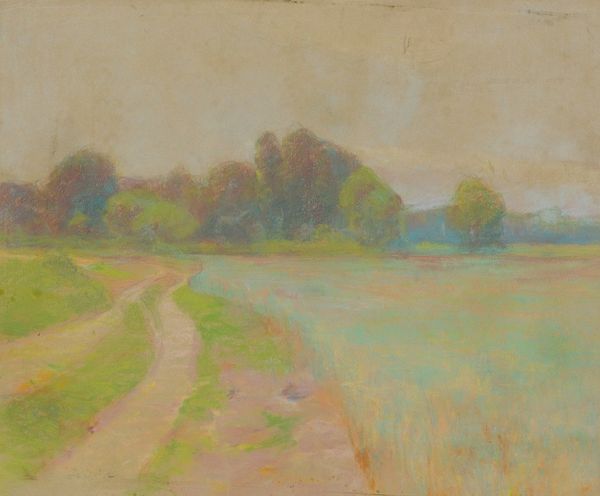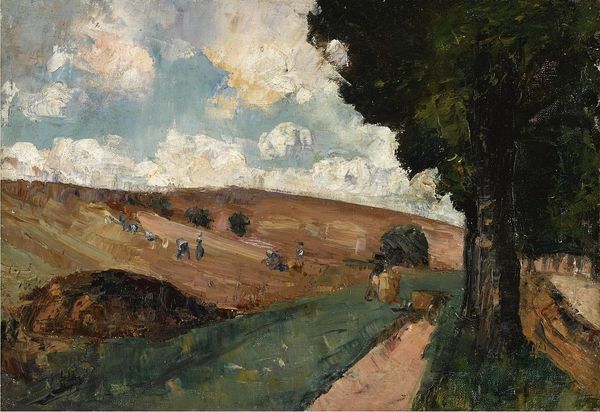
painting, plein-air, oil-paint
#
painting
#
impressionism
#
plein-air
#
oil-paint
#
landscape
#
road
#
genre-painting
Copyright: Public domain
Editor: Alfred Sisley's "The Road to Louveciennes Montbuisson," a landscape painting, presents a scene from everyday life. There's such a softness to the colors, a quietness. How would you interpret its composition and form? Curator: Observe how the artist's deliberate placement of the road serves not merely as a visual element, but rather as a structural vector, leading the eye deep into the picture plane, effectively dissecting the canvas into distinct yet harmonious sections. How does this compositional strategy influence your understanding of space within the painting? Editor: I notice the muted color palette; the blues and greens seem to blend almost seamlessly. What is the impact of that blending? Curator: Notice how the application of pigment – each short, broken stroke – captures not merely the object, but its ephemerality, its ever-changing interaction with light. Isn't it so, this concern is not simply with representation but with the very sensation of seeing? Editor: It's true; I’m struck by how the blurring effect somehow amplifies the painting's emotional depth. What do you make of the sky dominating so much of the painting? Curator: Indeed. That expansive sky, realized through subtle gradations and dynamic brushwork, acts as a sort of emotional ceiling for the work, exerting a quiet yet palpable influence over the entire visual field. Sisley uses it to balance this. The balance is what sets the tone for the piece, correct? Editor: That makes me think about how Impressionism values the subjective experience over objective reality, which the compositional breakdown accentuates so well here. Thanks for pointing that out! Curator: The pleasure is mine. It is rewarding to re-observe such carefully created harmonies in form, texture, and space.
Comments
No comments
Be the first to comment and join the conversation on the ultimate creative platform.
